Why You Shouldn’t Leave Japan Without Trying High-End Sushi
When people imagine Japan, sushi is often at the top of their bucket list.
But what many travelers don’t realize is that expensive sushi in Japan isn’t just a luxury—it’s a cultural experience.
It’s not about gold leaf or Instagram bragging rights. It’s about centuries of culinary tradition, omotenashi (Japanese hospitality), and the mastery of a chef who has likely trained for a decade just to serve you one piece of nigiri.
As someone born and raised in Japan, I didn’t even try high-end sushi until I was 28 years old. And that first experience completely changed how I view Japanese cuisine.
In this guide, I’ll share everything you need to know—what makes luxury sushi so special, how to enjoy it like a local, and what to expect when you walk into a top-tier sushi restaurant in Tokyo or anywhere else in Japan.
What Makes High-End Sushi in Japan So Special?
Japanese sushi culture is incredibly deep—and it’s often misunderstood outside of Japan.
While casual sushi like kaiten-zushi (conveyor belt sushi) is delicious and accessible, high-end sushi belongs to a different world.
1. Itamae: The Sushi Chef as a Master Craftsman
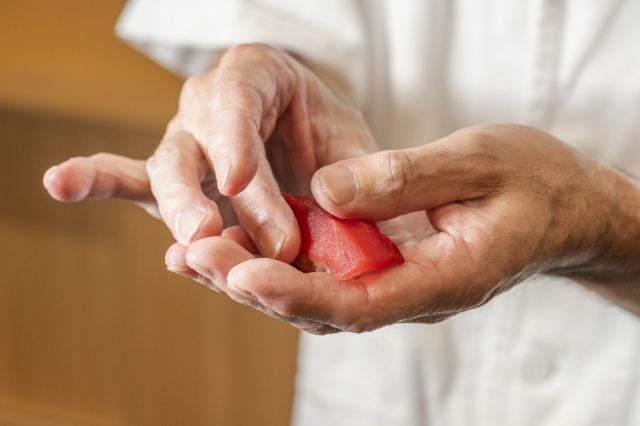
Top sushi chefs in Japan often train for over 10 years before they’re allowed to make nigiri for customers.
They master knife techniques, fish aging, rice seasoning, and even guest observation.
When you sit in front of an itamae at a small sushi counter, you’re not just eating—you’re watching a performance that balances precision, grace, and intuition.
2. Fish Quality and Seasonality

Premium sushi isn’t about loading up on fatty tuna and salmon. It’s about timing and sourcing. Chefs work with trusted suppliers, often buying fish at dawn from Toyosu Market. Every day, they choose ingredients based on what’s best in season, whether it’s rich winter toro or delicate summer squid.
Some pieces are aged (jukusei) to enhance flavor, while others are seared or lightly cured. Every cut has intention.
3. The Shari (Rice) Is Half the Art
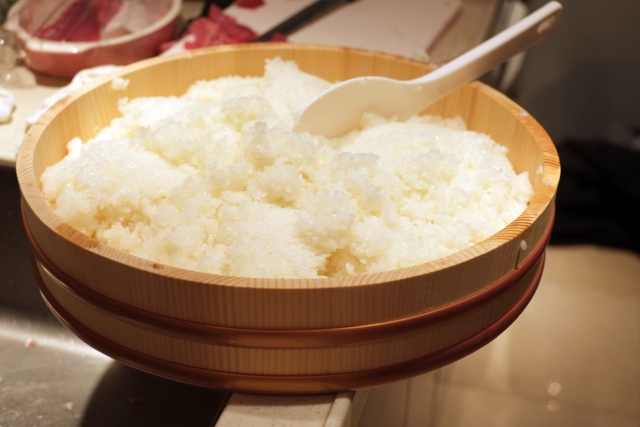
Ask any Japanese sushi lover, and they’ll tell you: rice makes or breaks sushi. High-end chefs obsess over the type of rice, the water temperature, the vinegar blend, and even how tightly it’s packed.
In fact, many chefs adjust the seasoning of the rice depending on the fish served. For white fish, the rice might be lighter. For uni, it might be slightly warmer. That level of detail is hard to imagine until you taste it yourself.
4. Hospitality You Can Taste
Japanese omotenashi means anticipating guests’ needs without them having to ask. At a luxury sushi counter, the chef carefully watches your expressions and pace. They might change the order of pieces or even serve you something off-menu—just for you.
That personal attention is part of what makes high-end sushi so memorable.
My First Time Tasting Expensive Sushi in Japan
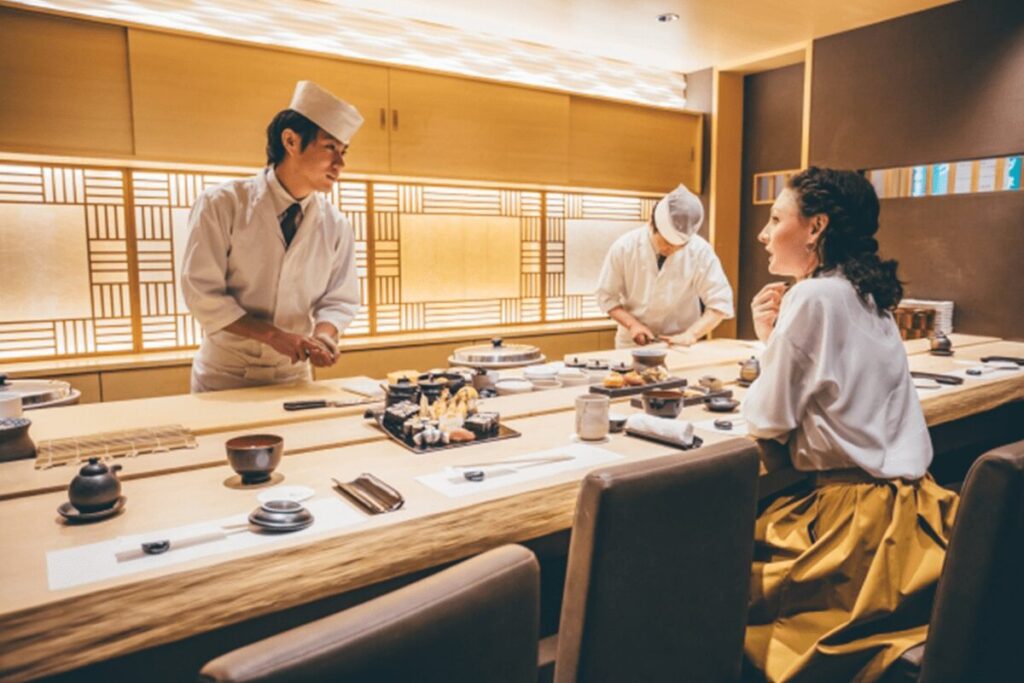
Here’s something honest: despite being born and raised in Japan, I didn’t eat “expensive” sushi until I was 28 years old.
That first experience? It was with my wife.
We had just moved to a new area and decided to treat ourselves. We found a cozy, counter-style sushi place that offered a ¥10,000 omakase course. At the time, it felt extravagant—but looking back, it was actually very reasonable for what we received.
From the moment we sat down, everything felt intentional. The chef greeted us, asked if we had any allergies or preferences, and began preparing each piece with quiet focus.
The first bite melted in my mouth—I still remember it. The warmth of the rice, the freshness of the fish, the balance of flavors. Every piece was served directly onto the counter, no plate, no soy sauce dish. Just sushi, hand to hand.
We didn’t talk much during the meal. We just exchanged glances between bites and whispered things like, “Wow… this is unreal.”
That night, I realized sushi wasn’t just food. It was a feeling—a sense of calm, gratitude, and connection. It’s something I’ll never forget, and it’s why I recommend every visitor to Japan try it at least once.
How to Properly Enjoy Expensive Sushi (Without Feeling Lost)
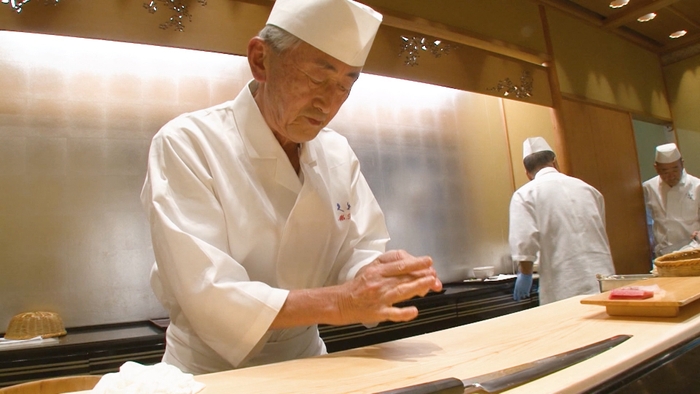
Many travelers feel unsure about etiquette when stepping into a high-end sushi restaurant in Japan. Here’s how to get the most from the experience:
1. Choose Omakase (Let the Chef Lead)
Most luxury sushi restaurants serve omakase courses, meaning the chef decides what to serve. Trust the process—it’s how you’ll experience the freshest and most balanced progression of flavors.
2. Use Your Hands (Yes, Really)
It’s perfectly acceptable—and even preferred—to eat nigiri with your fingers. Sushi is meant to be enjoyed in one bite, immediately after being served.
3. Don’t Drown It in Soy Sauce
In many cases, the chef will brush on just the right amount of soy sauce or seasoning. Avoid dipping unless told otherwise. Never add wasabi on top unless it’s provided separately.
4. Avoid Strong Perfume or Cologne
Fragrance interferes with the subtle aromas of the sushi. Many top-tier restaurants even post this rule on their website.
5. Respect the Flow
You can take one or two quick photos, but avoid pulling out your phone for every piece. High-end sushi is about being present—so enjoy the moment.
Top High-End Sushi Spots in Tokyo (and Beyond)
Here are a few famous and approachable sushi restaurants worth checking out:
| Name | Location | Price (Dinner) | Notes |
|---|---|---|---|
| Sukiyabashi Jiro | Ginza | ¥40,000–¥50,000 | World-famous, very formal |
| Sushi Saito | Akasaka | ¥40,000+ (invite) | Michelin-starred legend |
| Sushi Yoshitake | Ginza | ¥35,000–¥40,000 | 3 Michelin stars, warm style |
| Sushi Arai | Ginza | ¥30,000–¥40,000 | Popular with young chefs |
| Sushi no Midori | Tokyo | ¥8,000–¥15,000 | High quality at good value |
💡 Tip: Reserve via Pocket Concierge or TableAll to access restaurants that usually require Japanese skills or hotel concierges.
How Much Should You Budget?
- Lunch omakase: ¥8,000–¥20,000
- Dinner omakase: ¥25,000–¥50,000
- Michelin 3-star venues: ¥50,000+ per person
Most do not accept walk-ins, and many require reservations weeks in advance.
Quick Japan Sushi Travel Tips
- ☑︎Book in advance (1–2 months ahead is ideal)
- ☑︎Dress smart (no sandals or tank tops)
- ☑︎Be punctual—arriving late may forfeit your seat
- ☑︎Use a pocket Wi-Fi or Japan eSIM to access maps and bookings
- ☑︎Travel insurance is helpful for non-refundable reservations
Final Words: Sushi in Japan Is Not Just a Meal—It’s a Memory
You don’t have to spend ¥50,000 to experience amazing sushi in Japan. Even a humble ¥10,000 omakase can deliver a moment that stays with you forever.
So whether you’re a foodie, a curious traveler, or just someone looking for one truly unforgettable dinner in Japan—make it sushi. Just once.
I waited 28 years to try it, and I’m glad I did. But if you’re coming to Japan soon, don’t wait that long.





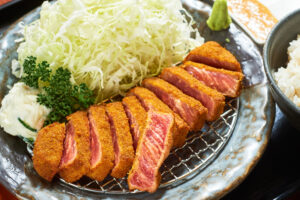
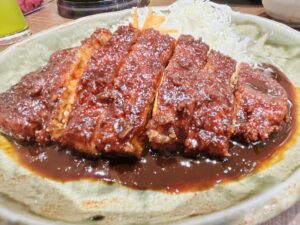

Comments